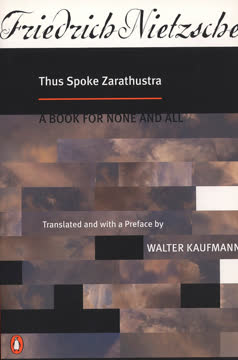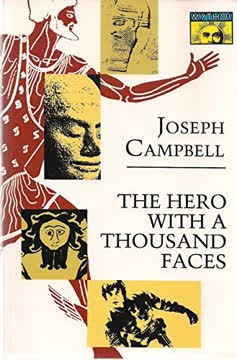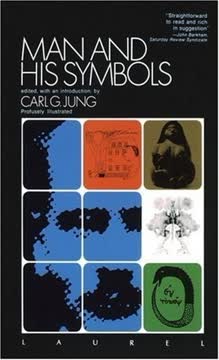Key Takeaways
1. Dreams are the Unconscious's Language
As a general rule, the unconscious aspect of any event is revealed to us in dreams, where it appears not as a rational thought but as a symbolic image.
Dreams as communication. Dreams aren't random occurrences but meaningful expressions from the unconscious, offering insights into aspects of ourselves and our experiences that remain hidden from our conscious minds. They translate raw emotions and subliminal perceptions into a symbolic language, providing guidance and advice.
Beyond rational thought. The unconscious communicates through images and symbols rather than logical arguments. These symbols, while often perplexing, hold deeper meaning than any rational explanation could convey. Understanding this symbolic language is key to unlocking the wisdom of the unconscious.
Dreams as a bridge. Dreams serve as a bridge between the conscious and unconscious realms, offering a pathway to self-understanding and personal growth. By paying attention to our dreams, we can gain access to a wealth of information about our inner selves and navigate life's challenges with greater awareness.
2. Symbols Transcend Conscious Understanding
Thus a word or an image is symbolic when it implies something more than its obvious and immediate meaning.
Symbols as keys. Symbols are more than just signs or representations; they possess layers of meaning that extend beyond our immediate comprehension. They tap into the unconscious, evoking emotions and ideas that lie beyond the grasp of reason.
Universal and personal. Symbols can be both universal, reflecting shared human experiences and archetypes, and deeply personal, carrying unique significance for the individual dreamer. Understanding the interplay between these two aspects is crucial for accurate interpretation.
Beyond definition. The true power of a symbol lies in its ability to evoke ideas and emotions that defy precise definition. As we explore a symbol, we are led to concepts that lie beyond the reach of reason, expanding our understanding of ourselves and the world around us.
3. Individuation: The Journey to Wholeness
Man becomes whole, integrated, calm, fertile, and happy when (and only when) the process of individuation is complete, when the conscious and the unconscious have learned to live at peace and to complement one another.
Harmony within. Individuation is the process of integrating the conscious and unconscious aspects of the self, leading to a state of wholeness, balance, and fulfillment. It's about becoming a complete and integrated individual.
A lifelong journey. Individuation is not a destination but a lifelong process of self-discovery and growth. It involves confronting our shadow, integrating our anima or animus, and ultimately aligning our ego with the Self.
Benefits of individuation. Completing the process of individuation brings about a profound sense of inner peace, integration, and purpose. It allows us to live more authentically, embrace our full potential, and navigate life's challenges with greater resilience and wisdom.
4. Myths Reflect Universal Archetypes
Those dream images were called “archaic remnants” by Freud; the phrase suggests that they are psychic elements surviving in the human mind from ages long ago.
Ancient echoes. Myths are not simply stories from the past but reflections of universal archetypes, innate patterns of thought and behavior that reside in the collective unconscious. These archetypes manifest in our dreams, fantasies, and cultural expressions.
Connecting to humanity. By studying myths, we gain insight into the shared psychological inheritance of humanity. We discover recurring themes and patterns that transcend time and culture, connecting us to the wisdom of our ancestors.
Understanding the unconscious. Recognizing archetypal patterns in our dreams and experiences allows us to better understand the workings of the unconscious. It provides a framework for interpreting symbolic language and navigating the complexities of the human psyche.
5. The Shadow Reveals Hidden Aspects of Self
It is the face of his own evil shadow that grins at Western man from the other side of the Iron Curtain.
The dark side. The shadow represents the unconscious aspects of our personality that we disown or repress, often because they are perceived as negative or undesirable. It includes traits like egotism, laziness, and destructive impulses.
Projection and integration. We often project our shadow onto others, seeing our own faults and shortcomings reflected in their behavior. Recognizing and integrating the shadow is crucial for self-awareness and personal growth.
Benefits of shadow work. By confronting our shadow, we can reclaim valuable qualities and energies that have been suppressed. This leads to greater authenticity, compassion, and a more balanced understanding of ourselves and others.
6. Anima and Animus: Inner Guides
In other words, though an individual’s visible personality may seem quite normal, he may well be concealing from others—or even from himself—the deplorable condition of “the woman within.”
Inner feminine and masculine. The anima (in men) and animus (in women) represent the unconscious feminine and masculine aspects of the psyche, respectively. They influence our emotions, relationships, and creative expression.
Shaping influences. The anima is often shaped by a man's relationship with his mother, while the animus is influenced by a woman's relationship with her father. Understanding these influences is key to integrating these inner figures.
Positive and negative aspects. The anima and animus can manifest in both positive and negative ways. When integrated, they can bring creativity, intuition, and a deeper understanding of the opposite sex. When repressed, they can lead to destructive moods, rigid opinions, and troubled relationships.
7. The Self: Center of the Psyche
The individual is the only reality.
The core of being. The Self represents the totality of the psyche, the organizing center that integrates the conscious and unconscious aspects of our being. It is the source of our unique potential and the driving force behind individuation.
Beyond the ego. The Self is distinct from the ego, which is only a small part of the total psyche. The ego must learn to align with the Self in order to achieve wholeness and live a meaningful life.
Symbols of the Self. The Self is often symbolized by images of wholeness and unity, such as mandalas, circles, and the Cosmic Man. These symbols remind us of our connection to something larger than ourselves and the potential for integration and transcendence.
8. Art as a Mirror to the Soul
Every dream is evidence of this process.
Reflecting the unconscious. Art serves as a mirror to the soul, reflecting the unconscious anxieties, aspirations, and archetypal patterns of individuals and entire societies. By studying art, we can gain insight into the collective psyche and the challenges of our time.
Modern art's message. Modern art, in particular, often expresses the fragmentation, alienation, and spiritual emptiness of contemporary life. It reflects the loss of traditional values and the search for new meaning in a rapidly changing world.
The artist's role. The artist acts as a conduit, channeling the energies of the unconscious into tangible forms. By giving expression to these hidden forces, the artist helps us to confront and integrate them, fostering greater self-awareness and psychological healing.
9. The Dangers of Unchecked Unconsciousness
The more that consciousness is influenced by prejudices, errors, fantasies, and infantile wishes, the more the already existing gap will widen into a neurotic dissociation and lead to a more or less artificial life far removed from healthy instincts, nature, and truth.
The power of the unconscious. The unconscious holds immense power, capable of influencing our thoughts, emotions, and behaviors in profound ways. When left unchecked, it can lead to destructive impulses, distorted perceptions, and a disconnect from reality.
The need for balance. It is crucial to maintain a balance between the conscious and unconscious realms. Repressing the unconscious can lead to neurosis and psychological distress, while being overwhelmed by it can result in chaos and disintegration.
The role of consciousness. Consciousness acts as a guiding force, helping us to navigate the complexities of the unconscious and integrate its contents in a healthy and constructive way. Without consciousness, we risk becoming victims of our own hidden impulses and desires.
10. The Importance of Individuality
In these times of social upheaval and rapid change, it is desirable to know much more than we do about the individual human being, for so much depends upon his mental and moral qualities.
The individual's significance. In an age of mass society and collective ideologies, it is more important than ever to recognize the value and importance of the individual. Each person has a unique potential to contribute to the world, and it is essential to foster their growth and development.
Resisting conformity. Individuation requires resisting the pressure to conform to societal norms and expectations. It involves embracing our unique qualities, pursuing our own path, and living authentically, even in the face of opposition.
A legacy of self-knowledge. By striving for self-knowledge and living in accordance with our own inner truth, we leave a legacy of authenticity and inspiration for future generations. We demonstrate the power of the individual to shape their own destiny and contribute to the betterment of the world.
Last updated:
FAQ
What's Man and His Symbols about?
- Exploration of the Unconscious: The book delves into the unconscious mind, focusing on how symbols manifest in dreams and art.
- Role of Symbols: Jung emphasizes the importance of symbols for self-understanding and personal growth, serving as guides to navigate one's psyche.
- Collective Unconscious: Introduces the concept of the collective unconscious, containing archetypes that resonate across cultures and time.
- Integration of Opposites: Discusses the importance of integrating conscious and unconscious aspects for psychological wholeness.
Why should I read Man and His Symbols?
- Accessible Psychology: Jung wrote this book to make his ideas more accessible to the general public, beyond academic psychology.
- Self-Understanding: Offers insights into personal psychological struggles through the exploration of dreams and symbols.
- Cultural Relevance: Connects ancient myths and modern psychology, showing how timeless symbols influence contemporary life and thought.
- Practical Applications: Readers can apply Jung's insights to their own lives, particularly in understanding dreams and personal symbols.
What are the key takeaways of Man and His Symbols?
- Dreams as Guidance: Dreams are meaningful messages from the unconscious, offering guidance and insight into personal issues.
- Individuation Process: Outlines the process of integrating different aspects of the self to achieve a balanced personality.
- Symbolism in Life: Recognizing and understanding symbols can lead to deeper self-awareness and healing.
- Symbols as Guides: Symbols serve as guides to understanding our inner selves and navigating life's challenges.
What are the best quotes from Man and His Symbols and what do they mean?
- “The dream is its own interpretation.”: Dreams should be understood in their own context, not through external definitions.
- “The unconscious is a great guide, friend, and adviser of the conscious.”: Emphasizes the supportive role of the unconscious in self-discovery.
- “Man becomes whole, integrated, calm, fertile, and happy when the process of individuation is complete.”: Achieving balance between the conscious and unconscious leads to a fulfilling life.
- "The anima is responsible for the fact that a man is able to find the right marriage partner.": Highlights the anima's role in guiding men toward meaningful relationships.
How does Jung define symbols in Man and His Symbols?
- Symbols vs. Signs: Symbols carry deeper meanings, while signs merely denote objects or concepts without additional significance.
- Personal and Collective Symbols: Symbols can be personal, arising from individual experiences, or collective, rooted in shared human history and culture.
- Dreams as Symbolic Language: Dreams communicate through symbols, revealing insights about the dreamer's psyche and life circumstances.
What is the process of individuation in Man and His Symbols?
- Integration of the Self: Individuation involves integrating various aspects of the self, including the conscious ego and unconscious elements.
- Role of Archetypes: Archetypes, such as the shadow and anima, play a crucial role in confronting and assimilating hidden aspects.
- Psychological Growth: Leads to greater self-awareness and maturity, allowing individuals to live more authentically and harmoniously.
What role do archetypes play in Man and His Symbols?
- Universal Patterns: Archetypes are universal symbols and themes in the collective unconscious, influencing behavior and thought across cultures.
- Guiding Forces: Serve as guiding forces in the individuation process, helping individuals navigate their inner worlds.
- Cultural Reflection: Manifest in myths, dreams, and cultural narratives, reflecting shared human experiences and psychological truths.
How does Jung address the relationship between the conscious and unconscious mind in Man and His Symbols?
- Interconnectedness: The conscious and unconscious minds are interconnected, with the unconscious influencing conscious thoughts and behaviors.
- Balance and Harmony: Achieving balance between the two is essential for psychological health, as neglecting the unconscious can lead to neurosis.
- Role of Symbols: Symbols act as bridges between the conscious and unconscious, facilitating understanding and integration.
What is the anima and how is it discussed in Man and His Symbols?
- Feminine Aspect of the Male Psyche: The anima represents feminine qualities within a man's psyche, encompassing emotions and intuition.
- Integration for Wholeness: Integrating the anima is crucial for psychological wholeness, allowing men to connect with their emotional selves.
- Symbolic Representation: Often appears in dreams as a female figure, guiding the dreamer toward deeper self-awareness.
How does Jung define the anima and animus in Man and His Symbols?
- Anima as Feminine Aspect: The anima is the feminine element within a man's psyche, manifesting in various forms.
- Animus as Masculine Aspect: The animus represents the masculine aspect within a woman's psyche, influencing thoughts and behaviors.
- Integration is Key: Both must be integrated into the conscious self for psychological balance and maturity.
What role do dreams play in Man and His Symbols?
- Dreams as Communication: Dreams are a primary means through which the unconscious communicates with the conscious mind.
- Collective Images: Often present collective images that provide insight into psychological conflicts and potential for growth.
- Symbolic Interpretation: Understanding dream symbols is crucial for personal development and self-awareness.
How does Jung relate the unconscious to modern science in Man and His Symbols?
- Interconnection of Psyche and Matter: Suggests a relationship between the unconscious and the structure of matter, proposing a unifying principle.
- Synchronicity Concept: Meaningful coincidences illustrate how inner psychic events correspond with outer phenomena.
- Influence on Scientific Thought: Jung's ideas encourage exploration of connections between the unconscious and the natural world.
Review Summary
Man and His Symbols explores Jung's theories on archetypes, dreams, and the collective unconscious. Readers find it enlightening, offering insights into human psychology and symbolism. Many appreciate Jung's approach to dream interpretation and his ideas on individuation. Some criticize the book's dated content and vague concepts. The work is seen as a gateway to understanding Jungian psychology, though some find it complex and challenging. Overall, readers value its exploration of the human psyche and its connection to myths, art, and culture.
Similar Books










Download PDF
Download EPUB
.epub digital book format is ideal for reading ebooks on phones, tablets, and e-readers.













